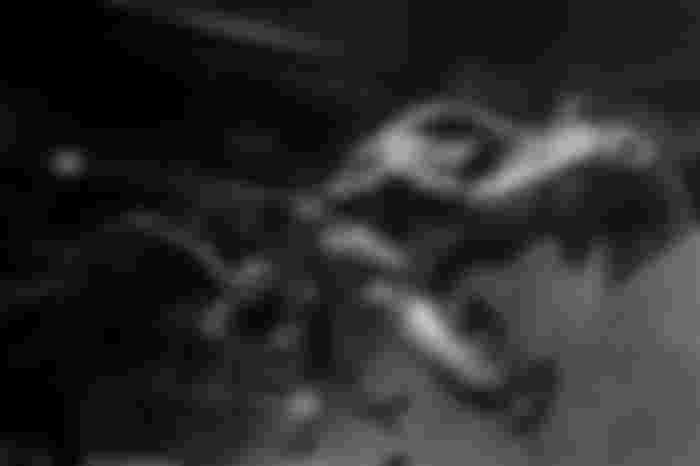How to Gain Knowledge about Dinosaurs
Apart from birds, dinosaurs have been extinct for millions of years. What we have are mainly footprints and petrified bones, how can we really know anything about them?
Since we cannot go back in time to study them, we must rely on deductions and inductions based on the various remnants. Although birds have changed and differ from classical dinosaurs in certain ways, our knowledge of birds helps us as well. The rest is logic.
Of course we cannot reach anything better than plausibility, but mostly that is what science deals with. A fact is always a fact at the present level of knowledge. When new knowledge is gained, truths and facts are sometimes replaced by new truths and facts. That is very clear in palaeontology; the last 30 years have totally changed our view of dinosaurs. That depends mainly on two things: more and more varied findings, and new forensic methods. CT Scans, for instance, have revealed new facts about the bone structure of these animals.
The evidence we have can be put into four distinct groups: Anatomy, Bone Histology, Footprints, and Soft Tissue.

Anatomy
Dinosaur anatomy (based on bones and skeleton) and biomechanics, can tell us about their construction and movement. This also leads to certain conclusions about their metabolism.
Bone Histology
Bone histology, the analysis of bone structure on a microscopic level, tells us about how and how quickly their bones grew and how the bone structure changed while they grew. This, as well, reveals things about their metabolism.
Their bones, which grew very quickly, were highly vascularised and the structure changed as they grew. This is not reptilian, but mammal- and bird-like. It's the bone structure of an animal which had internal heating, a warm-blooded animal.
Humans also have bones that are constantly changing – they are remodelled – based on external factors. If you strain the bones they grow stronger.
Footprints
Certain aspects of how they moved can be concluded from footprints and trackways - both how they moved physically and with respect to social behaviour and mating. Obviously, some dinosaurs were social.

Soft Tissue
Important evidence is provided by imprints of soft tissues on bones, and on a few occasions preserved soft tissues. One important result of such findings is that it is now beyond all doubt that many dinosaurs had feathers. Another is the reconstruction of neural anatomy, the anatomy of a dinosaur brain.
Feathers
What was the original purpose of feathers? Among contemporary animals, only birds have them and for them feathers is a precondition for flying. However, flying cannot have been their original purpose, because all traits develop gradually and little feathers are worthless for flying. Probably they were developed as isolation, to limit loss of body heat. When they were already well evolved, they came to be a tool for flying.
The presence of feathered dinosaurs is another evidence supporting that they were at least to some extent warm blooded. Feathers help to prevent loss of body heat to the environment, but they would be a great disadvantage to an animal who would need to catch heat from the environment.
Birds & Dinosaurs
Birds are a subset of Dinosauria. They descend from a group of dinosaurs called Theropoda, a group including the famous Tyrannosaurus Rex. However, the species leading to birds was probably of limited size.
Many characteristics of birds existed already with the Theropoda, evolved there or earlier. No doubt, we can learn a great deal about Dinosaurs in general, and Theropoda in particular, by studying birds - or at least by comparing dinosaur findings and conclusions about dinosaur findings with what we know about birds.

Dinosaur Variety
It is easy to forget how large the dinosaur variety was. They came in many forms and sizes, and evolved over a huge time. Surely, they were not all the same; what we know about one or some species might be wrong for others.

Tyrannosaurus Rex is not only the most famous dinosaur species, it is also the most thoroughly studied, and the one we have most knowledge about. Large dinosaurs were the first whose bones were found and this, the largest ever land-living predator, thrilled human imagination, which made it popular. It was, indeed, a formidable animal - fast, strong, armoured with the best vision of all land-living animals ever, and probably at the top of intelligence of its world. It was a Theropod and very closely related to birds.
Copyright © 2020 Meleonymica/Mictorrani. All Rights Reserved.
(Lead image and the two black dinosaur skeletons by OpenClipart-Vectors/Pixabay. (CC0/Public Domain)
Related article: "To Revive an Extinct Dinosaur - Is it at all Possible?"
Here you can find my articles about Palaeontology.
If you are interested in Evolution & Paleontology, a topic including Dinosaurs, join my community "Natural Science (1c4e)".
You find all my writings on Read.Cash, sorted by topic, here.




I have no idea about how scientist study dinosaurs. I'm amazed. How can something we see everyday are used to study those gigantic beings? I love how you write your articles. Simple, easy to understand, and direct to the point.